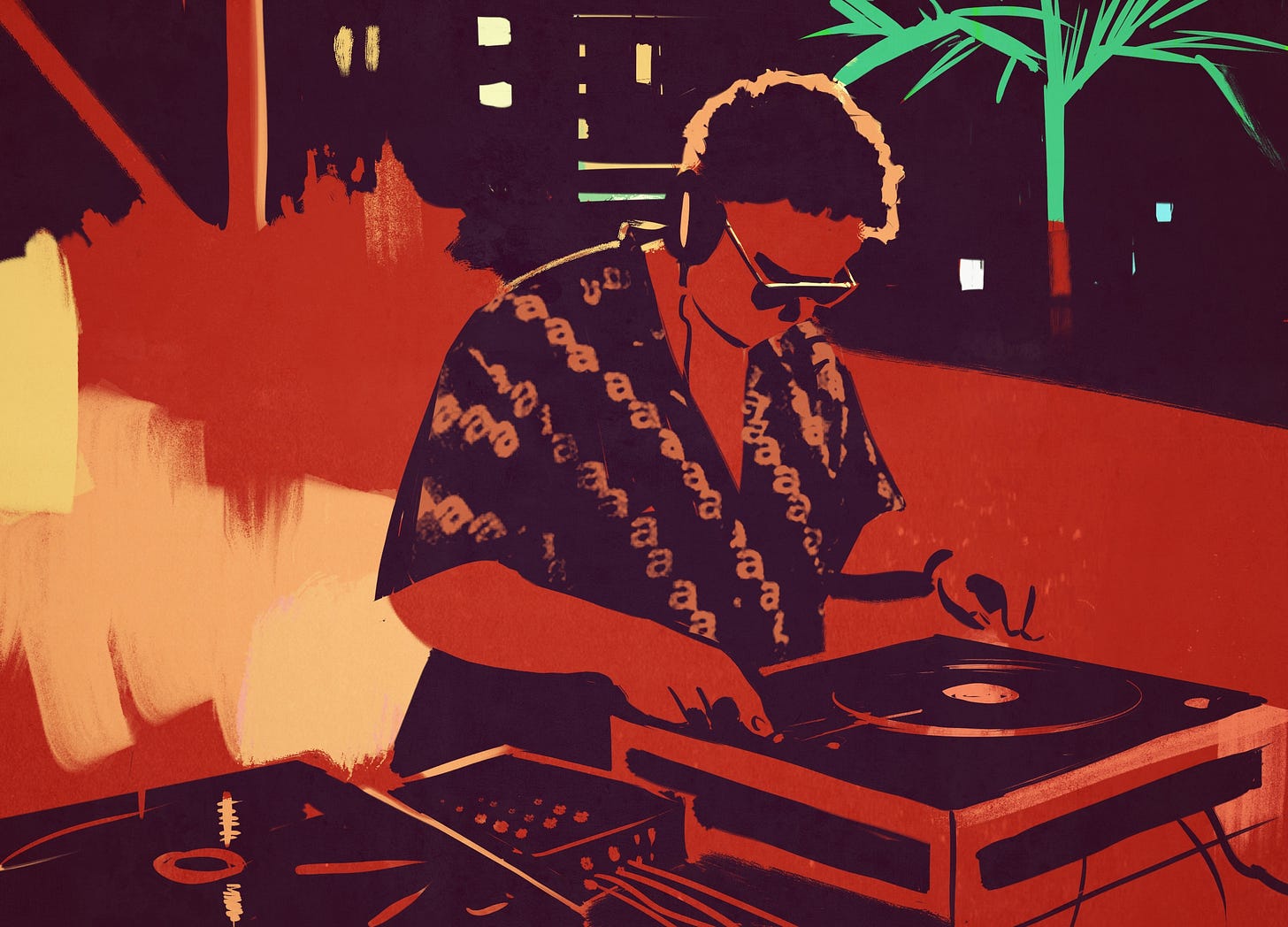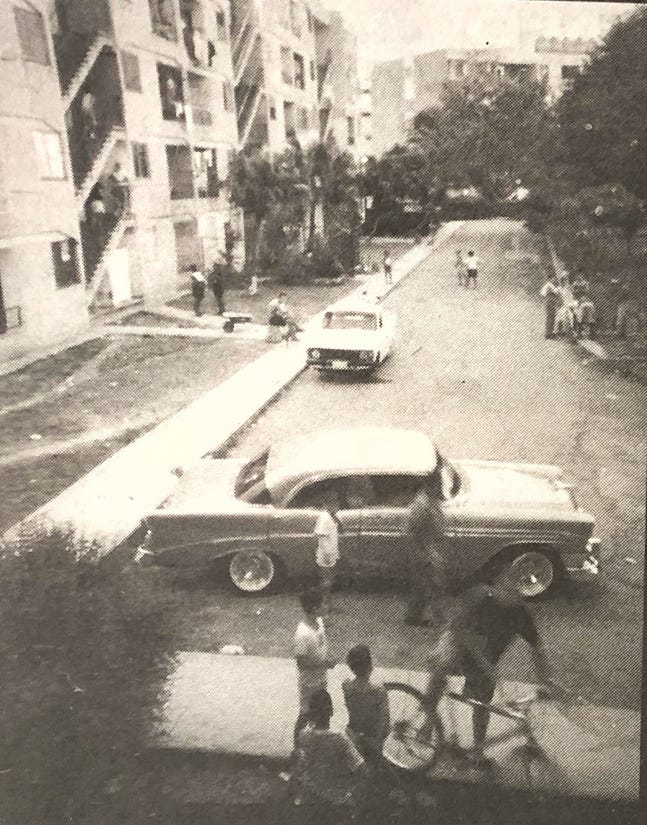My breath paused when I saw the photo below in an Associated Press story about the recent RPM festival, a vinyl fair in Havana. For a few minutes I just sat here staring; it was a misty moment. The picture shows some records juxtaposed on a table, a pretty random arrangement. But it felt like seeing a spread of Tarot cards laid out in front of me, superimposed with symbols and personal meaning. In the photo, there’s an uneven pile of what look like pretty mint condition Panart 45s, music recorded between 1943 and 1961 in the Panart studio in Havana (although the copy of at least the record that’s visible was pressed after it was appropriated in 1961 by the Cuban government for its short-lived State “Panart Nacionalizada” label). Next to them, Hasta Siempre Comandante, an album of songs in different musical styles honoring Che Guevara, happens to sit atop a pile of secondhand albums. The photo pointedly references the story that I’m telling in my book Cuba on Record, about the rise and fall of the Panart label, studio and record factory, and its sweeping musical and societal connections, which I’m publishing in serialized form here, and also through a lot of the other writing and music I’m posting on the Cuba on Record Substack. The next chapter of the book is coming in January. I hope you’ll subscribe, read, listen, and maybe comment and share.

The Cuban DJ and producer Garo was in Havana the week of the RPM Festival. Garo, whose full name is Edgar González, also known as Edgaro, and who lives in Brooklyn, was there to dig for music, but principally to stage the Luchando Block Pari (which can be tranlsated as the “Fighting On Block Party”) in Old Havana, an event he described on Instagram as “a celebration of music, vinyl, rumba, and the spirit of La Habana Vieja.”
The December 12 free street party featured a live performance by rumba masters Los Muñequitos de Matanzas, and music by DJs Rich Medina, Mickey Pérez and Afroqbando, as well as Garo headlining on the decks himself.
To get just an idea of what went on, here’s a sample Garo set from a session at NY’s Blue Note club, via his Soundcloud:
Upon his return from Havana this week, Garo wrote on Instagram that the block party was “Pure magic. Organizing something like this in Old Havana, free for everyone, felt like giving back what was given to me as a kid living through the ‘Periodo Especial’ in Alamar.”
Alamar, the sprawling Soviet-style housing project where Garo grew up, is known as the birthplace of hip hop in Havana.
I met Garo, who I know as Edgar, in 2003, on a trip to Havana to cover an encounter between Miami and Havana musicians. Then 18 years old, he was half of a rap duo that was well known in Cuba called Doble Filo. He invited me and my husband (artist and de facto Cuba on Record creative director) David Navas and conga player Sammy Figueroa to the apartment that he shared with his mother for a home-cooked dinner. When we found the block, salsa music was blasting from an empty gold 1955 Chevy on the street, which its owner seemed to have set up as a sound system for the neighborhood’s enjoyment. A poster of rapper Big Pun hung on Edgar’s bedroom wall. He showed us some graffiti tags that he and his girlfriend had drawn on sheets of paper. When I asked him if they had sprayed them on walls, he shook his head. “It’s not the police,” he explained. “It’s that we don’t have any paint.”
In the article that I wrote then for The Miami New Times, I gave some background about rap in Havana, which had emerged as an underground movement sometime in the eighties that ignited when kids rigged up antennas to listen to Miami radio and watched VHS tapes of MTV that people sometimes brought from The States (MTV also became available for tourists to watch in Havana hotels).
“Officials were quick to denounce rap as a subversive expression of imperialist culture,” I wrote then. “But for young, mostly black Cubans, break dancing and baggy clothes were ways to feel part of the world, while rhyming gave them an outlet to speak frankly about their lives in Cuba. Afro-Cuban pride, freedom of expression, police brutality, the dollar economy, and prostitution are frequent topics - along with the fervent affirmation of Cuban [identity] that is the evergreen subject of all of the island’s song.”
In 1995, a group of local rappers created the Havana Rap Festival. By 2000, the event was featuring invited artists like Tony Touch, Talib Kweli, Dead Prez and Mos Def. And then a government Cuban Rap Agency was created. But the story was much more complicated than that sounds.
For more on the history of Cuban hip hop, I recommend the 2006 documentary “East of Havana,” directed by Jauretsi Saizarbitoria (one of the organizers of the recent Luchando Block Pari and an heir to the Cuban cultural dynasty that was the Centro Vasco restaurant) and Emilia Menocal. It’s another one that I can’t find available to watch - but I’m checking to find out if it’s out there somewhere and will update here soon - meanwhile, here is the trailer:
“Hip hop is an incredible school for kids like me who come from poverty,” Garo told me when we reconnected on Zoom recently. “It really opened our minds to different ways of thinking about the world, and beyond hip hop, a way of connecting through music. I don’t know what my life would have been without that.”
In New York, where he has lived for some years now, Garo has gained reknown for mixes that can include Cuban music from every era. Lately he’s been listening to some obscure Cuban funk. And he’s increasingly become focused on getting the vintage tracks that he uncovers out not only to crowds at clubs, but to the fellow DJs who frequently come to him as a source. For that purpose, he’s creating a new label for his archival compilations on vinyl. The first record is planned for February release.
“It’s like a public service,” he says. “I have to do it. I’ve been digging my whole life.”
News from Cuba lately has been dire, as reported last week in the NY Times headlined “10 Years Ago, a U.S. Thaw Fueled Cuban Dreams. Now Hope Is Lost.” With January 20 in view, Substack’s Latin American Review of Books just put out a podcast episode called “Cuba's Worst Nightmare.”
For Garo, the island’s fragility is all the more reason to reach out to the people there: Cuban to Cuban.
“Cuba’s all been very curated for extranjeros (foreigners),” he says. “Whatever the needs are for foreigners that’s what Cuba becomes. I want to do it the other way around.”
He and his crew are already planning another “Luchando” party for next year.
“We can give them back the streets,” he says, adding, “It’s very hard for people to know that something’s possible if they can’t see it.”
Possibility is a guiding force for Garo now, a mindset he says that represents a big change from when he was a kid in Alamar:
"If you don't make it happen it won't happen."









